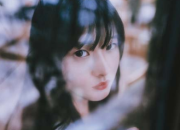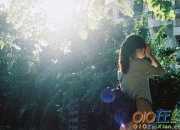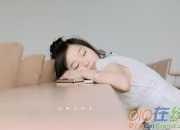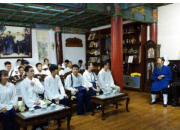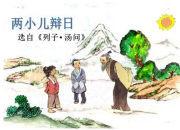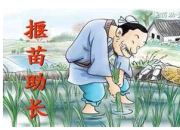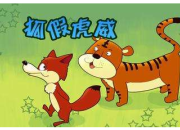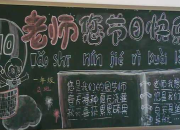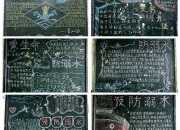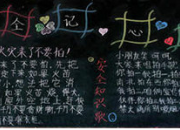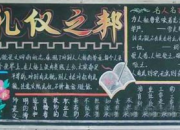洛阳龙门石窟英文导游词
时间:2021-08-31洛阳龙门石窟英文导游词
龙门石窟是中国石刻艺术宝库之一,是国家龙门石窟英语导游词A级景区,位于中国河南省洛阳市南郊12公里处伊水两岸的龙门山和香山崖壁上,开凿于北魏中期至北宋的四百余年间。接下来小编搜集了洛阳龙门石窟英文导游词,仅供大家参考,希望帮助到大家。
篇一:洛阳龙门石窟英文导游词
Good morning ladies and gentlemen, may I have your attention please? From your smiling faces, I know that you may have sweet dreams last night, right? Ok, I have some news even exciting, that is, today we’re going to visit the Longmen Grottoes, which you have been expecting for a long time.
So now let me give you a general introduction first. Around 13 km south of Luoyang, there are two picturesque hills confronting each other with the Yi River flowing northward between them, connected by an arched stone bridge resembling a natural gate tower. This is the right place named Longmen, where the well-known Longmen Grottoes is located.
The grottoes, which earn the fame of one of the Three Treasure Houses of Stone Sculpture in China, were created over 1500 years age. The Longmen Grottoes was first known in the year 493 AD, when Emperor Xiaowen moved his capital to Luoyang from Datong, Shannxi Province, which marked the initiation of development and expanse of Buddhism in Central China. It prolongs for 1000 meters from north to south. According to the statistics conducted in recent years, there are 2300 caves and niches with over 100000 Buddhist figures. In addition, more than 2800 tablet inscriptions and some 40 Buddhist pagodas were preserved in or out of the caves.
Now, we’ve got to the grottoes. Please get off the bus. Here is the Qianxi Temple. It was built in the early Tang Dynasty around 640 AD. It has altogether 7 Buddhist statues inside, of which, Buddha Amitabha is sitting in the central with 2 of his favorite disciples, 2 Bodhisattvas, and 2 Heavenly Kings.
Please come with me. Now we are in front of the Bin yang Caves. The Bin yang Caves consist 3 large caves, the North, the Middle and the South caves. The Mid and the South Bin yang Caves were built under Emperor Xuanwu for practicing the merits and virtues for his diseased parents, late Emperor Xiaowen and late Empress Dowager(遗孀) Wenzhao in 500 AD. While the North Bin yang cave was added for the late Emperor Xuanwu by a eunuch(太监) in the palace named Liu Tang in 508AD.
In the West Hill of Longmen, there are several “the most” caves to feast your eyes. Just now, we visited the Ten-thousand Buddha Cave with 15000 Buddhist images, which has the most Buddha images, and the Lotus Cave with 2cm-high Buddha images, which are the tiniest Buddha images.
And now, we’ve come to another “most”, the Fengxian Temple. So what highlights can we see here? I’ll show you. One day in 655AD, Empress Dowager Wu Zetian cried in the palace. Emperor Gaozong asked her why she was so unhappy. She said: “Do you think I am beautiful?” the Emperor answered: “Of course, you are the most beautiful lady under heaven!” the Empress said: “but sooner of later I would be ugly. Beauty cannot last long.” The Emperor Gaozong at once made the best artist in the palace paint a beautiful portrait of Empress Wu. But she still cried, she said: “the portrait is beautiful, but after hundreds of years, it will rot and disappear.” The Emperor Gaozong suddenly saw the light. He issued an edict(法令) that a stone statue must be carved at once. Hearing this edict, Empress Wu was so pleased that she donated 20000 strings(串) of cash coins for her cosmetics(化妆品) and also attended the consecration(献祭仪式) of the chief Buddha when the construction was thoroughly completed in order to shorten the time of the project. So the main Buddha Losana was carved according to Empress Wu’s appearance.
That is the legend. Now we see, the Buddha Losana is 17.14m high with its head 4m, each ear 1.9m, and flanked by 2 symmetrical disciples, Bodhisattvas, Heavenly Kings, and Great Men of Strength on both sides. The chief Buddha gives you an impression of dignified manner, magnificent looking, wise, farsighted and kind nature. Looking around the overall arrangement, we would rather say that the Fengxian Temple is a scene of a grand imperial court than a spot of Buddhism. Generally speaking, the Fengxian Temple is the most magnificent and artistic among all the shrines of the Tang Dynasty and as well as an example of success in integrating politics with Buddhism in ancient China.
Ok everyone, now you can take photos here. Or you can ask questions that you don’t understand. After 15 minutes we will gather right here. See you then.
篇二:洛阳龙门石窟英文导游词
Welcome to Longmen Grottoes.They are located in the south of Luoyang City.They are between Mount Xiang and Mount Longmen and face Yi River.Longmen Grottoes,Yungang Caves and Mogao Caves are regarded as the three most famous treasure houses of stone inscriptions in China.The grottoes were started around the year 494 when Emperor Xiaowen of the Northern Wei Dynasty (386-534 A.D.) moved the capital to Luoyang.Work on them continued for another 400 years until the Northern Song Dynasty (960-1127 A.D.).The first caves of Longmen were excavated in 494,the 12th year of the Northern Wei Dynasty Xiaowen Emperor's reign.The grottoes extend for some 1,000 meters (about 1,094 yards) from north to south.They contain over 2,300 holes and niches,2,800 steles,40 stupas,1,300 caves and 97,000 sculptured figures that have survived the test of time.Most of these works date from the Northern Wei Dynasty and the flourishing age of the Tang Dynasty (618-907 A.D.).Lots of historical materials concerning art, music, religion, calligraphy, medicine, costume and architecture are stored in the Longmen Grottoes.
Fengxian Temple
Fengxian Temple was built in the Tang Dynasty and it is the largest grotto in Longmen Grottoes with a width of 36 meters (about 118 feet) and a length of 41 meters (about 136 feet).There are nine major figures of various facial appearances and temperaments in the temple that were built in accordance with Buddhist rites by the artists.The most impressive figure is the statue of Vairocana Buddha sitting cross-legged on the eight-square lotus throne.It is 17.14 metres (about 56 feet) high;the head alone is four meters (about 1 3 feet) high,and the ears are nearly 2 meters (about 6 feet) long.Vairocana means illuminating all things in the sutra.The Buddha has a well-filled figure,a sacred and kindly expression and an elegant smile.According to the record on the epigraph,the Empress Wu Zetian together with her subjects took part in the ceremony of Introducing the Light (a Buddhist blessing that the Buddha opens the spiritual light of himself and shares it with others).At the sides of Vairocana there are two statues of Vairocana Buddha’s disciples,Kasyapa and Ananda,wearing prudent and devout expressions. The figures of Bodhisattvas and Devas can also be found in the temple.Some have dignified and genial expressions,while others are majestic and fiery. The various appearances and delicate designs are the representations of the Tang Empire’s powerful material and spiritual strength and the wisdom of its people.
